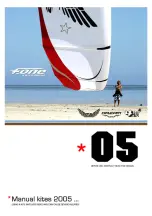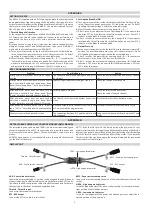
S
ECTION
7: A
IRPLANE
AND
S
YSTEMS
C
IRRUS
D
ESIGN
C
IRRUS
A
IRFRAME
P
ARACHUTE
S
YSTEM
SR20
7-94
P/N 11934-005
A three-point harness connects the airplane fuselage structure to the para-
chute. The aft harness strap is stowed in the parachute canister and
attached to the structure at the aft baggage compartment bulkhead. The
forward harness straps are routed from the canister to firewall attach points
just under the surface of the fuselage skin. When the parachute deploys, the
forward harness straps pull through the fuselage skin covering from the
canister to the forward attach points.
Activation Handle
CAPS is initiated by pulling the CAPS Activation T-handle installed in the
cabin ceiling on the airplane centerline just above the pilot’s right shoulder.
A placarded cover, held in place with hook and loop fasteners, covers the
T-handle and prevents tampering with the control. The cover is removed
by pulling the black tab at the forward edge of the cover.
Pulling the activation T-handle will activate the rocket and initiate the
CAPS deployment sequence. To activate the rocket, two separate events
must occur:
1. Pull the activation T-handle from its receptacle. Pulling the T-handle
removes it from the o-ring seal that holds it in place and takes out the
slack in the cable (approximately two inches (5 cm) of cable will be
exposed). Once the slack is removed, the T-handle motion will stop and
greater force will be required to activate the rocket.
2. Clasp both hands around activation T-handle and pull straight down-
ward with a strong, steady, and continuous force until the rocket acti-
vates. A chin-up type pull works best. Up to 45.0 pounds (20.4 kg) force,
or greater, may be required to activate the rocket. The greater force
required occurs as the cable arms and then releases the igniter switch
plunger activating the electronic igniter.
• N
OTE
•
Jerking or rapidly pulling on the activation T-handle greatly
increases the pull forces required to activate the rocket.
Attempting to activate the rocket by pushing the activation
T-handle forward and down limits the force that can be applied.
Pulling the activation T-handle straight down generates the
greatest force.
A maintenance safety pin is provided to ensure that the activation handle is
not pulled during maintenance. However, there may be some circum-
stances where an operator may wish to safety the CAPS system; for
example, the presence of unattended children in the airplane, the presence
of people who are not familiar with the CAPS activation system in the
airplane, or during display of the airplane.
Reissue A









































